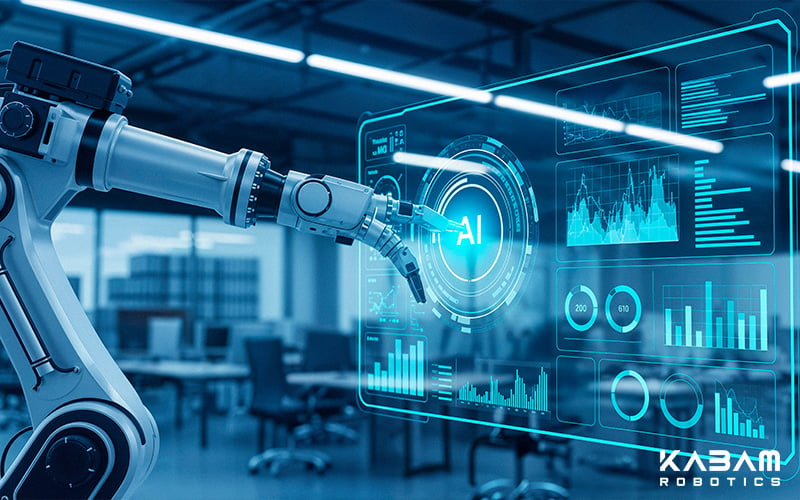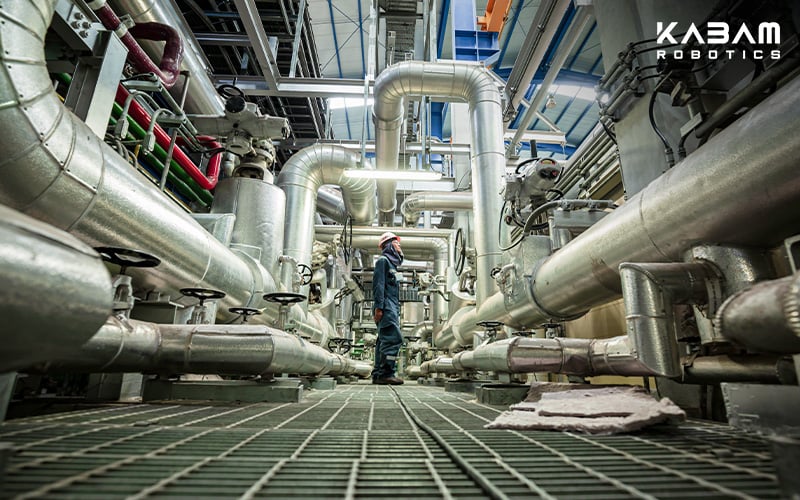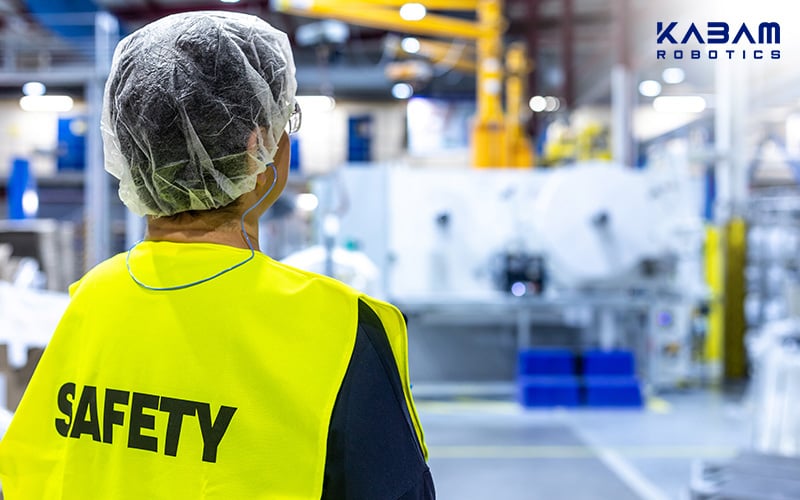
Robotics in manufacturing is modernizing operations in various industries by increasing efficiency and improving workplace safety. As factories grow in scale and complexity, security robots are becoming essential for safeguarding facilities, protecting assets, and ensuring the well-being of workers. Through the integration of artificial intelligence (AI), automation, and real-time monitoring, these robots offer a modern approach to industrial security.
This article explores how security robots in manufacturing are enhancing asset protection, workplace safety, emergency response, and scalability in large-scale industrial environments.
Enhanced Asset Protection with Perimeter Patrolling
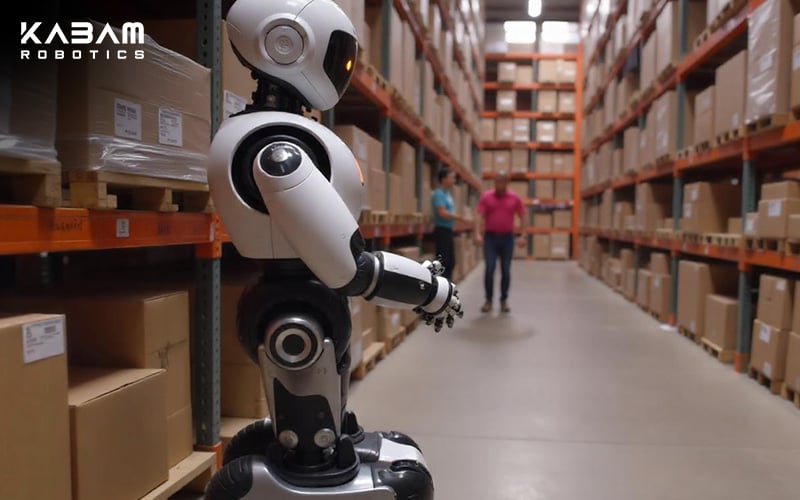
Manufacturing facilities often span vast areas, making manual security monitoring inefficient and costly. Security robots address this challenge with automated asset protection, which is the utilisation of robotics and AI to safeguard physical assets, such as property, equipment, and infrastructure. These robots are often deployed to continuously patrol perimeters, entry points, and restricted zones.
- Real-time surveillance: Security robots are equipped with cameras, thermal imaging, and motion sensors to detect unauthorized access or suspicious activity.
- Immediate response capabilities: If a security breach occurs, the robot can trigger alarms, send alerts to security teams, or even activate lockdown measures.
- Deterrence against theft and vandalism: The visible presence of security robots discourages potential trespassers, reducing incidents of theft or sabotage.
Robotics in manufacturing can also be integrated into existing surveillance systems and facility management platforms, providing real-time security solutions tailored for industrial settings.
Worker Safety and Hazard Detection
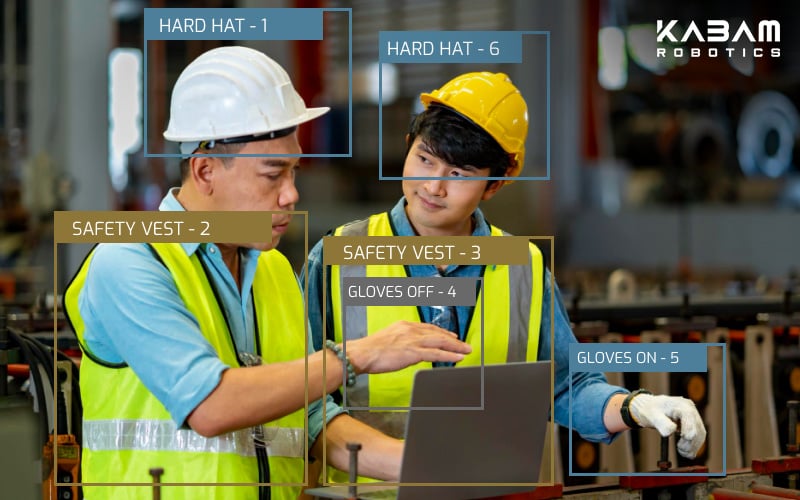
Manufacturing environments present numerous hazards, from heavy machinery and moving parts to hazardous chemicals. Workplace safety robots play a crucial role in monitoring risks and ensuring a secure environment for employees.
- Hazard identification: Robots detect chemical leaks, overheating machinery, or fire hazards before they escalate into major safety concerns.
- Preventative action: Once a risk is identified, security robots can trigger alerts, provide safety recommendations, or activate emergency response measures.
- Reducing workplace accidents: By proactively detecting potential dangers, security robots help prevent workplace injuries, protecting both employees and equipment.
- PPE Detection: Security robots equipped with AI vision can also detect whether workers are wearing the required personal protective equipment (PPE), helping to enforce safety compliance and reduce workplace accidents.
With their ability to continuously assess and respond to safety risks, security robots contribute to safer, more compliant manufacturing environments.
Emergency Response and Fire Detection
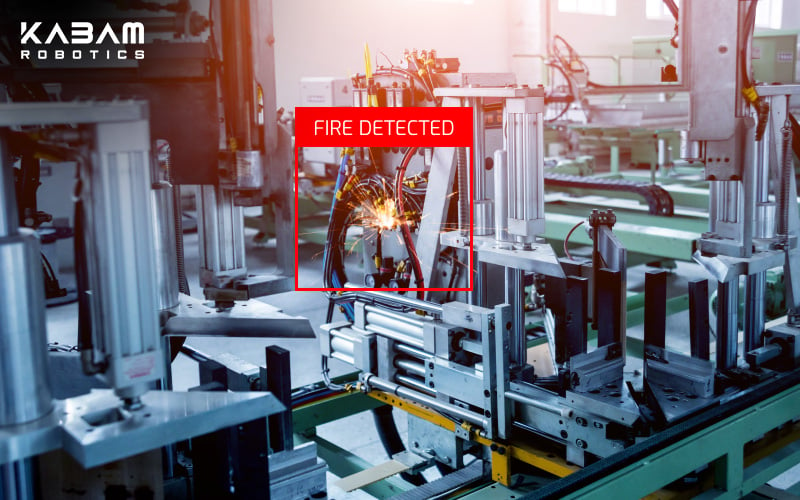
Manufacturing plants house expensive equipment, valuable inventory, and personnel, making them high-stakes environments where strong fire detection and emergency response measures are essential. These facilities can also be hazardous for human workers due to heavy machinery, high temperatures, and combustible materials. Emergency response robotics enhances traditional security systems by providing autonomous first response capabilities — such as detecting fires, triggering alarms, and guiding evacuations — helping to safeguard both assets and lives while minimising human exposure to danger.
- Early detection: Security robots when equipped with smoke, heat, and gas sensors can identify early warning signs of fire or hazardous gas leaks.
- Real-time alerts and data transmission: Upon detecting an emergency, the robot immediately notifies building occupants and emergency responders while providing live video feeds and environmental data.
By leveraging robotics for emergency response, manufacturers can reduce damage, improve response times, and improve overall workplace safety.
Scalability for Large-Scale Manufacturing Facilities
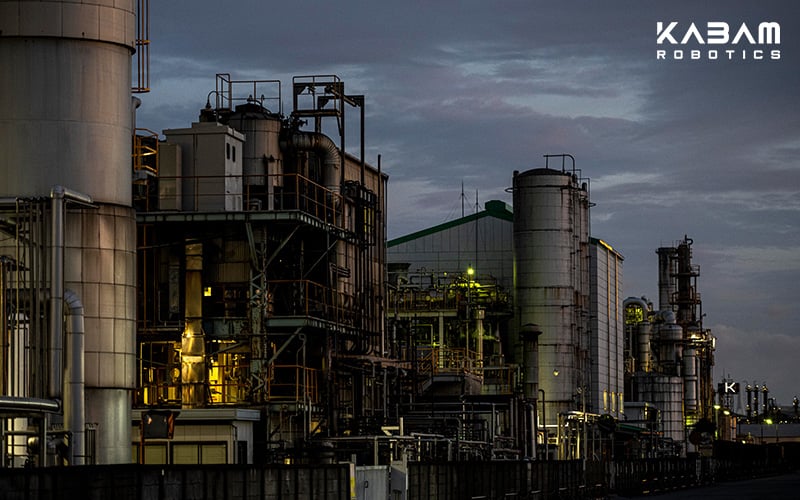
For industries operating large-scale manufacturing plants, scalability is a key consideration. Robotics in facility management allows security solutions to scale with growing production demands.
- Multi-floor and multi-site monitoring: Security robots can patrol vast warehouse spaces, production floors, and storage areas without human intervention.
- IoT connectivity for seamless integration: Security robots coordinate with existing surveillance cameras, access control systems, and AI analytics for enhanced facility-wide security.
- Adaptability to dynamic environments: Whether monitoring raw materials storage or finished product inventories, robots can be programmed to adjust their patrol routes based on real-time security needs.
The ability to operate in diverse environments makes robotics in manufacturing a cost-effective, reliable solution for ensuring industrial safety and security.
The Future of Robotics in Manufacturing Security

As technology evolves, the role of robotics in manufacturing security will expand. AI-powered analytics, 5G connectivity, and advanced automation will drive even greater efficiency in industrial security operations. Manufacturers investing in security robots today are future-proofing their facilities against emerging risks and ensuring long-term operational resilience.
In modern manufacturing environments, ensuring workplace safety is not just a regulatory obligation; it is also a fundamental responsibility. From flammable materials and complex machinery to fast-paced operations, manufacturing plants pose numerous safety risks. Security robots are now playing a pivotal role in mitigating these risks, offering real-time surveillance, emergency response capabilities, and automated anomaly detection. By integrating AI and IoT technologies, robotics in manufacturing helps reduce human exposure to hazardous zones whilst enhancing operational safety and compliance.
Case Study: Strengthening Safety Protocols at an Overseas Industrial Facility
At a large overseas industrial facility, KABAM’s Halo security robots were deployed to strengthen site-wide safety and perimeter protection. Designed to operate autonomously 24/7, the Halo units patrolled the grounds and responded swiftly to critical events. When a perimeter intrusion was detected, the robot immediately navigated to the breach point, issued a security warning via its speakers, and activated its blinking alert lights to deter unauthorised access. The robots also identified and flagged unattended bags in restricted zones, monitored for individuals lying on the ground who might require medical attention, and used onboard sensors to detect fire and smoke. All alerts were instantly transmitted to the control centre via KABAM’s Smart+ platform, enabling immediate human response. This deployment significantly enhanced the facility’s emergency readiness and risk mitigation efforts, showcasing how advanced robotics can protect both assets and lives in high-risk industrial environments.
For more information on our services, please contact us today.

